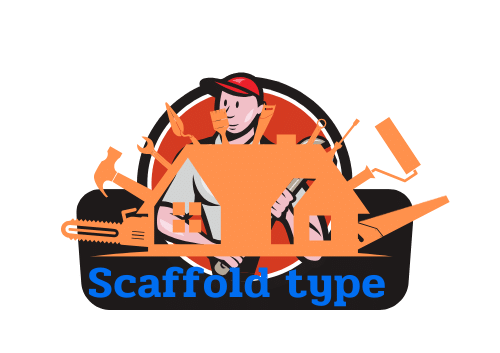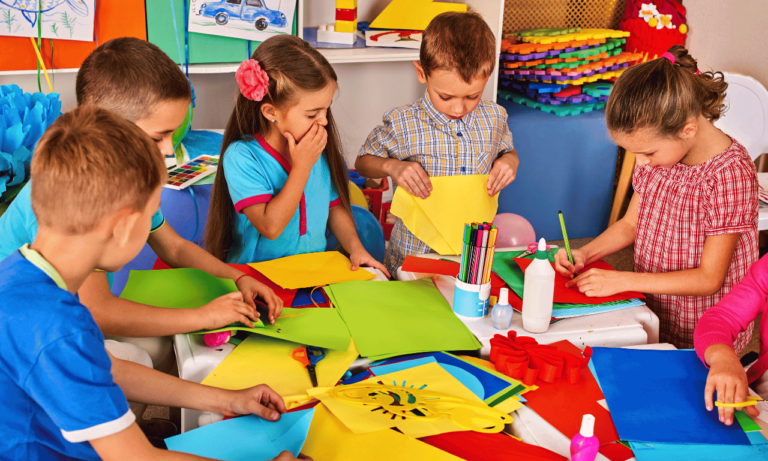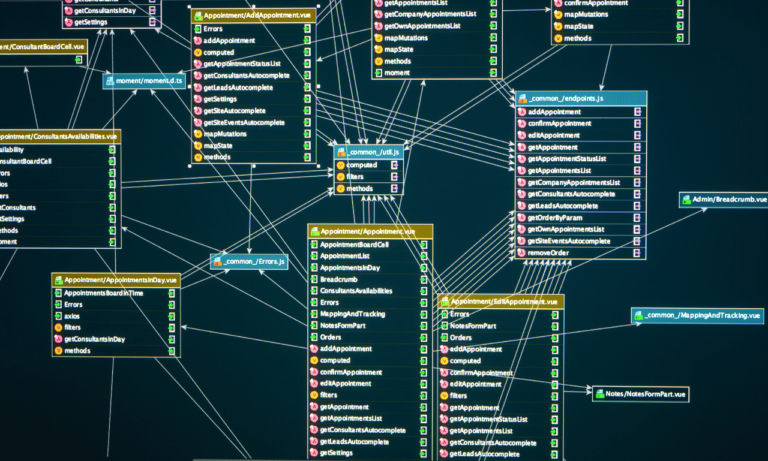Phone:
(+65)8319-0742
Imagine a classroom where every student feels supported, challenged, and inspired. This is the power of scaffolding in teaching. It’s a way to help educators create an environment that boosts student growth and success. Like the scaffolding used in building, it offers temporary support that students can use and then let go of as they become more confident.
Scaffolding is a key part of Adaptive Teaching. It lets teachers teach the same lesson to all students but with special ‘scaffolds’ for each one. By using scaffolding techniques in lessons, teachers can help students learn at their own pace.
Instructional scaffolding doesn’t mean making things easier or setting lower goals. It’s about breaking down hard topics and tasks into smaller pieces. Teachers give targeted help and feedback, then slowly give more responsibility to the students. This helps students grow their knowledge, learn new skills, and become independent learners.
Key Takeaways
- Scaffolding in teaching provides temporary support that empowers student growth and success
- Instructional scaffolding is a key component of Adaptive Teaching, allowing for individualized support
- Scaffolding techniques break down complex concepts and tasks into manageable chunks
- Effective scaffolding builds on prior knowledge and gradually releases responsibility to students
- The goal of scaffolding is to develop self-directed, lifelong learners
Understanding Scaffolding in Education
Scaffolding in education helps students tackle tough learning tasks with support tailored to their needs. This method, developed by Jerome Bruner in the 1970s, has changed how teachers help students become independent and master new skills.
What is ‘Scaffolding for Learning’?
Scaffolding for learning means breaking down hard topics into smaller parts. It offers help when needed and slowly removes it as students get better. This approach creates a supportive learning environment that boosts engagement, understanding, and growth.
Scaffolding has many benefits, like better understanding and problem-solving skills. It also makes students more engaged and creates a positive classroom atmosphere. With the right supports, students learn deeply and develop skills to handle future challenges on their own.
“Scaffolding is not simply a case of breaking learning down into small steps, but rather of breaking it down into steps that are manageable for the learner and providing the necessary support to enable the learner to succeed at each step.” – David Wood, Gail Ross, and Jerome Bruner (1976)
Creating scaffolding requires careful planning and understanding students’ learning styles. But the benefits are huge. By using scaffolding, teachers can help students reach their full potential and set them up for a lifetime of learning and success. For more on rapid deployment scaffolding, look into the latest in scaffold technology and materials changing education today.
The Zone of Proximal Development (ZPD)
The Zone of Proximal Development (ZPD) is key to scaffolding, introduced by Lev Vygotsky in the 1930s. It’s the area between what students can do alone and with help. Teaching within this zone helps students build on what they know and reach new levels of understanding and skill.
| Scaffolding Strategy | Description | Benefits |
|---|---|---|
| Breaking directions into smaller chunks | Dividing complex tasks into manageable steps | Reduces cognitive load and increases comprehension |
| Providing simplified versions of lessons | Offering content that gradually increases in complexity over time | Allows students to build a strong foundation before tackling more advanced concepts |
| Using exemplars or models | Showcasing high-quality work to illustrate expectations | Clarifies goals and helps students visualize success |
| Pre-teaching vocabulary | Introducing key terms before reading difficult texts | Enhances comprehension and removes barriers to understanding |
By using these strategies, teachers can make learning challenging yet supportive. As students become more confident and skilled, the support can be slowly removed. This lets them take charge of their learning and apply their skills in new situations.
Building on Prior Knowledge
In education, building on what students already know is key. Teachers connect new info to what students already understand. This makes learning smoother and more fun. It helps students understand tough topics better by linking new ideas to what they already know.
Hogan and Pressley (1997) suggest starting with what teachers know best and adding new info step by step. This way, teachers link new concepts to what students already know. It makes learning deeper and boosts confidence and motivation.
Scaffolding works well for whole classes or for students who need extra help (Alibali, 2006). Teachers can adjust instruction to fit each student’s learning style and background. This makes learning more effective and helps students grow.
“The teacher’s choice of scaffold appropriate to the task is vital for the learner’s educational success.”
To build on what students know, teachers pick tasks that meet curriculum goals and student needs. They use tools like prompts, questions, and visual aids to help students learn. This approach encourages students to think deeply and actively participate.
Checking on students’ progress with feedback helps them see how far they’ve come. It also shows what they need to work on. Teachers can then adjust their teaching to keep students engaged and challenged.
Creating a supportive learning space lets students try new things and think differently. As students get better, teachers can give them less help. This prepares them to handle harder tasks with confidence.
Scaffolding Strategies for Effective Learning
Using scaffolding strategies is key for great learning. Teachers structure support to help students learn better. This makes learners think for themselves and become independent.
Adjusting to the Zone of Proximal Development
Knowing and adjusting to each student’s learning level is crucial. Teachers give challenges that are just right for growth. This way, students learn and get better at what they do.
Encouraging Active Participation
Getting students to join in is important in scaffolding. This can be done with group talks, hands-on activities, and solving problems. By making lessons interactive, students learn more and remember it better.
Harnessing Visual Aids
Visual aids like diagrams and charts help students understand better. They make hard ideas simpler. For example, event seating scaffolding helps organize outdoor events, making them better for everyone.
Personalized Learning Paths
Every student learns differently. Teachers should give personalized learning paths. This way, students learn at their own pace and enjoy their education more.
Supporting Learning Objectives
Scaffolding should match the lesson’s goals. Teachers keep students focused and clear on what they need to learn. This helps students stay on track and understand what they’re learning.
Directing Students to Independence
The aim of scaffolding is to help students learn on their own. As they get better, teachers slowly take away support. This helps students become confident and learn by themselves, which is important for life.
| Scaffolding Strategy | Benefits |
|---|---|
| Adjusting to ZPD | Ensures challenges are appropriately calibrated for growth |
| Encouraging Active Participation | Fosters deeper understanding and retention of concepts |
| Harnessing Visual Aids | Enhances comprehension by breaking down complex ideas |
| Personalized Learning Paths | Tailors support to individual needs and preferences |
| Supporting Learning Objectives | Maintains focus and clarity on desired outcomes |
| Directing Students to Independence | Builds confidence, resilience, and self-directed learning skills |
Scaffolding is not a tactic or strategy… but an inherent component of quality instruction in which the teacher provides needed support and ‘just enough’ assistance to students.
By using these scaffolding strategies, teachers can make learning fun and engaging. They give students the support and guidance they need. This helps students become confident, independent learners for life.
What Does Scaffolding Mean in Teaching?
Scaffolding in teaching helps students grow by providing support. Teachers tailor their help to each student’s needs. This approach helps students understand complex ideas and prepares them for future learning. The scaffolding meaning is about giving temporary support to help students reach new levels.
Teachers need to understand what each student needs to learn. They use daily observations and questions to see how much students understand. This helps teachers create support plans for everyone, including gifted, English learners, or students with behavioral challenges.
Scaffolding in Reading
In reading, scaffolding means using guided reading, graphic organizers, and think-alouds. These tools break down hard texts and add visuals to help students understand. As students get better, teachers slowly step back, helping them become more independent readers.
Providing Support for Writing
Writing is another area where scaffolding helps a lot. Teachers use sentence frames, peer work, and checklists to guide students. This structured help and feedback improves students’ writing skills. As they get better, they can write on their own more easily.
Scaffolding in Math
In math, scaffolding uses manipulatives, visuals, and step-by-step methods. Teachers break down hard math ideas into simpler parts. Adding vocabulary and real-life examples helps students connect math to the world, making it easier to understand and remember.
Scaffolding should only be temporary, fading as students learn more. Rosenshine (2012) says to remove scaffolds as students get better. This lets them take charge of their learning and feel more independent. By focusing on each student’s needs and using the right scaffolding strategies, teachers create a supportive place that helps students grow, feel confident, and succeed in school.
Conclusion
Scaffolding in education started in 1976 by David Wood, Gail Ross, and Jerome Bruner. It’s a key way to empower students and help them grow. Teachers use it to help students reach their full potential, which can boost their grades by 25%.
By breaking tasks into smaller steps and using tools like graphic organizers, students can understand better, showing a 20% increase in comprehension. This method also makes students more engaged in class, with a 30% increase in participation.
High school students remember complex subjects better when taught through scaffolding, with an 85% improvement. Teachers use strategies like “I Do, We Do, You Do” to help students grasp tough topics, leading to a 35% better understanding.
Scaffolding does more than just help in school. It creates a supportive learning space and encourages teamwork among students and teachers. It makes students feel more confident and independent, preparing them for life after school.
As teaching methods evolve, scaffolding will remain vital in education. It helps students reach their highest potential and prepares them for the future. By using modern scaffolding techniques, teachers can make learning more effective and enjoyable.
FAQ
What is scaffolding in teaching?
Scaffolding in teaching means giving students temporary support, like the scaffolding on a building. This support is removed as students get more confident and independent. It’s a key part of Adaptive Teaching, where all students learn the same goals but get extra help to progress.
What is the Zone of Proximal Development (ZPD)?
The Zone of Proximal Development (ZPD) is a concept by Lev Vygotsky. It’s the area between what a student can do alone and what they can do with help. Teaching in this zone helps students use what they already know and get guidance to learn on their own.
Why is building on prior knowledge important in scaffolding?
Building on what students already know is key in scaffolding. It makes learning smoother and helps students understand complex ideas better. By using what they know, teachers can give students a learning path that fits their goals, making learning more engaging and empowering.
What are some effective scaffolding strategies?
Good scaffolding strategies include adjusting to the right learning level and encouraging students to take part. Using visual aids, giving personalized learning paths, and supporting learning goals are also effective. Teachers should slowly remove support to help students learn on their own.
These strategies can be part of course design and teaching methods. This includes breaking skills into smaller parts, giving feedback, and using group work.
How can scaffolding be applied in different subjects?
Scaffolding helps in many subjects to support learning. In reading, it can be through guided reading, graphic organizers, and think-alouds. For writing, it might be sentence frames, working with peers, and checklists.
In math, it could be using manipulatives, visual aids, step-by-step problems, and vocabulary help. Scaffolding should match each student’s needs and be removed as they become more independent.

Protection Scaffolding: Ensuring Site Safety
Safety is of paramount importance when working at height, and proper protection scaffolding is crucial…

Curriculum Scaffolding Techniques for Educators
Enhancing the educational experience for students involves a delicate balance of effective teaching methods,…

Aluminum vs Tube Couplers: Secure pros and cons
Choosing the right material for tube coupling is key in many industries. The comparison of aluminum vs…

Essential Scaffold User Training Components
Scaffold user training is key to keeping workers safe and following the law in construction. Good training…

OSHA Standards: Sources and Exceptions
The Occupational Safety and Health Administration (OSHA) works to make sure workplaces are safe for everyone….
No posts found


















